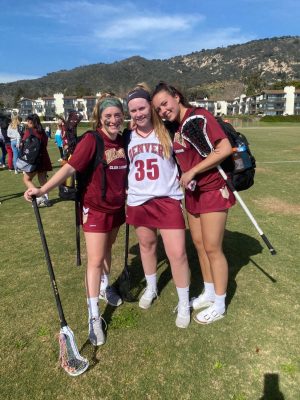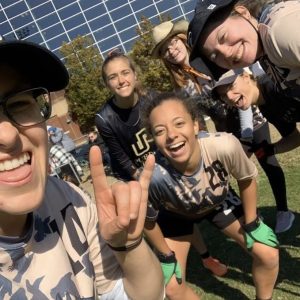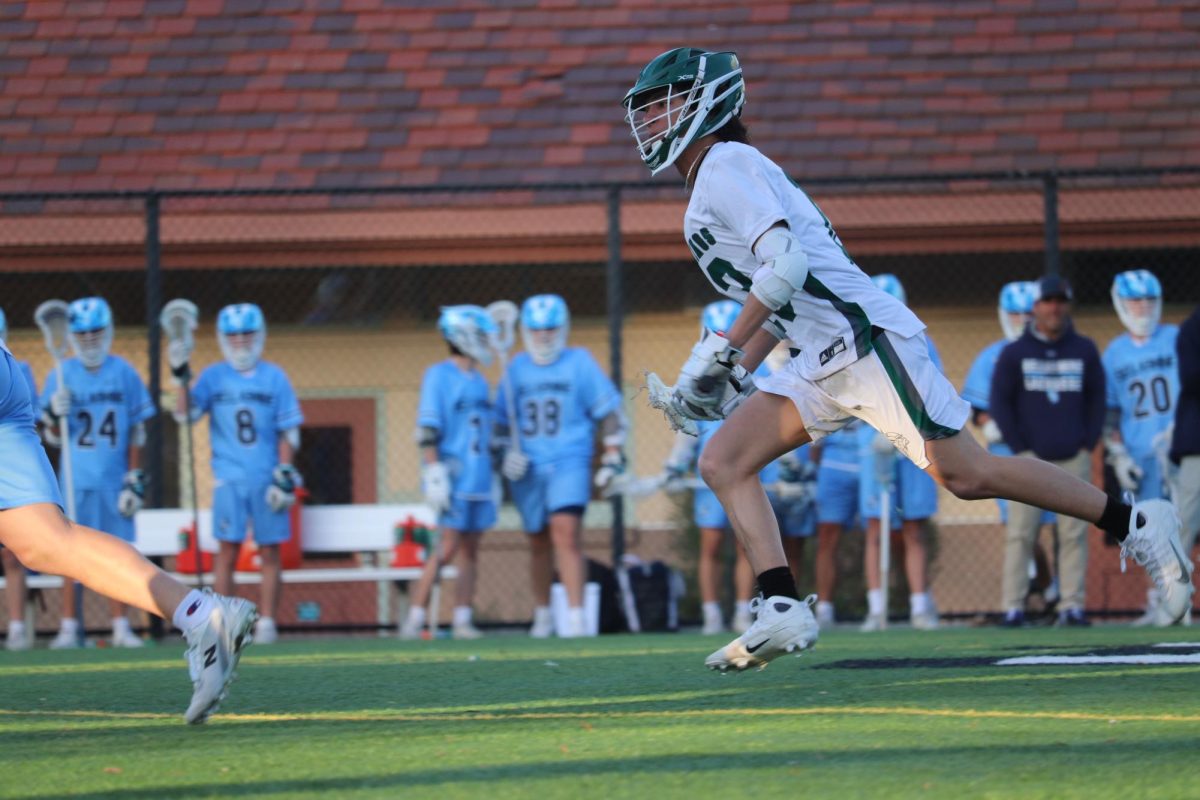Another Path to Play
Many students participate in high school sports, yet only a small number go on to play in college. Those who don’t commit either quit or find another path. One such path is club sports. These teams are less strict and less of a time commitment for students than varsity sports. Club sports allow them to continue their sport while being able to focus on their academics. This is especially relevant today due to a recent wave of colleges cutting varsity sports, which in turn has added more opportunities for club sports.
March 1, 2021
Paly is known for its championship winning sports teams, top-notch sports facilities, and committed student athletes. According to U.S News, 55.5% of high schoolers play sports and that percentage continues to slowly rise. Of those 55.5% only 7% make it to college sports and only 2% play for a Division l team.

Playing a varsity sport is a serious time commitment. These athletes wake up early in the morning and train long hours every day. Most high school students will either quit before college or find another way to pursue their sport.
One of those ways is joining a club sport in college. These clubs are a step up from intramurals, but a step down from varsity. These teams compete against other schools in or near their state and depending on what sport you play, there can also be regional and national competitions. Practice times can vary from once a week to five days a week and can last for one to three hours.
This pathway is beneficial for many students as it gives them more time to focus on their academics. The shortened practice times will give them time to finish homework or study for a test and they get to continue a sport they love at a competitive level.
One Paly participant in college club sports is Abby Ramsey (‘19). Ramsey played varsity lacrosse for Paly and knew she wanted to continue playing in college.
“I didn’t want to stop playing lax, but didn’t want to go D1, so club lax was the best in between option,” Ramsey said.
Ramsey decided to try out and made the team.
The three main differences between club and varsity sports in college is the flexibility, the level of funding and the access to amenities.
Decreasing the practice time compared to a varsity sport however, does not decrease the amount of competitiveness. While some teams are non-cut, others have tryout processes such as the one Ramsey had to go through. Esme Stotland (‘19) was able to walk onto the club water polo at the University of Colorado Boulder.
Some club sports even compete at the varsity level. For example, the University of Washington-Seattle doesn’t have a varsity wrestling team so the club wrestling team competes at the highest level and wrestles against varsity wrestlers from other schools.
Many club sports are funded by students with maybe a little support from the school. These teams do not get revenue from TV appearances, ticket sales, or concessions stands like varsity sports.
“Financially we are funded by donation as well as a budget. But we do fundraising every year,” Ramsey said.
Similarly, Stotland’s club team is almost completely paid for by the students.
“At CU, we receive some funding but most of it comes from dues,” Stotland said.
Many schools provide varsity athletes with athletic trainers, training facilities, and academic support. Some schools do not give club sport athletes access to these facilities while others do.
“I do think club sports should get varsity amenities,” said Ramsey. “At least for my club lax team, we take our practices and everything very seriously.”
On the other hand, Stotland and her club water polo team do have access to varsity amenities.
“At CU we do have access to varsity amenities like trainers and facilities which I think makes sense and we are very grateful for it,” Stotland said.
Some other benefits of joining a club team include getting a mental break, getting to experience a new sport and meeting a new group of friends.
“I think what I enjoy the most is getting a break from my busy life at practice, traveling around to different states with my team, and having a great group of girls that are all together because we love the same sport,” Ramsey said.
Many schools have a wide variety of fun and exciting sports clubs to join. For example, you could participate in archery, quidditch, wakeboarding and even tug-of-war. Julia Taylor didn’t even know ultimate frisbee existed until she got to Purdue University.
Taylor decided to join after her freshman year when some of her friends participated and really enjoyed ultimate frisbee. Taylor was also looking for another community to join.
Ultimate frisbee may not seem like a club sport compared to lacrosse and water polo and may be seen more as an intramural, according to Taylor, that doesn’t stop them from practicing hard.
“Right now, [we practice] once a week due to restrictions from COVID-19, but in the past we would have three practices a week for 2-3 hours each,” Taylor said.
Joining a club sport has given all three girls a new group of friends. They are close with their teammates and are even moving in with their teammates next year.
“Literally 99% of the most important people in my life are either my teammates or play for the men’s ultimate team,” Taylor said. “I live with all frisbee people and spend almost all of my time with frisbee people.”

Similar to Taylor, Stotland is also moving in with her teammates.
“My social circle is mostly my club friends, I’m even moving in with some of them,” Stotland said.
Ramsey has also found teammates to live with in the upcoming year and feels she has made some of her best friends though the lacrosse team.
With the pandemic and financial troubles, many schools have made the decision to cut some of their varsity sports. This may cause a trickle effect and increase club sport participation by experienced athletes, as those athletes will drop down a level to continue to pursue their sport.
Club sports also help a student choose a college based on academic fit over athletics. For both Ramsey and Stotland, joining a club team was not a defining factor when choosing their college.
“It was not a make or break decision, but my school has a really good club lax program and it was an added benefit,” Ramsey said.
Similar to Ramsey, Stotland said it did not affect her decision when committing to a college but it was an extra plus.
Taylor is grateful for the community the ultimate frisbee team has given her.
“Without my frisbee community, I honestly don’t know where I would be today,” Taylor said.
Attending a new school with new people and not a lot of familiar faces is a challenge for anyone. For Taylor, joining the team helped her find her people.
“I wasn’t on the team my freshman year and I really struggled to make connections on a college campus,” Taylor said. “When I joined frisbee, I was immediately welcomed with open arms and love these girls so much.”
All in all, playing in a club sport is a great opportunity for athletes to continue their career without the stress of being fully committed to a college sport. It’s a great way to make friends while also getting exercise and having fun.












